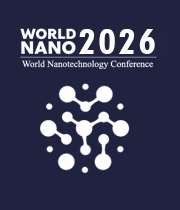Title : Hybrid activated carbon/rGO/nanoTiO2 electrodes with enhanced structural stability: Toward advanced electrochemical applications
Abstract:
The design of hybrid electrodes integrating carbon-based materials and metal oxides remains a critical challenge for next-generation electrochemical technologies [1]. Here, we report the synthesis and structural characterization of hybrid electrodes composed of activated carbon (CA), reduced graphene oxide (rGO), and titanium dioxide (TiO2) nanoparticles/nanobelts [2]. TiO2 nanoparticles were synthesized by a sol–gel method and further transformed into nanobelts via hydrothermal treatment, confirmed as anatase phase by Raman spectroscopy and X-ray diffraction [3]. Hybrid composites were fabricated by varying CA:rGO:TiO2 ratios, deposited onto titanium and graphite substrates using the doctor blade technique [4]. Several stabilizing agents—including polyvinylpyrrolidone, dimethylacetamide, polyvinyl alcohol, and glutaric acid—were screened to optimize adhesion and mechanical integrity [5]. X-Ray Diffraction is a technique used to determine the structural properties of nanoparticles TiO2 syntetized in our laboratory. Atomic force microscopy and Raman analysis demonstrated uniform dispersion of TiO2 within the CA/rGO matrix and strong interfacial bonding [6]. The optimized formulations exhibited improved cohesion, structural stability after sintering, and reproducibility, overcoming common drawbacks of hybrid electrodes. These findings highlight the potential of CA/rGO/TiO2 composites for capacitive deionization, supercapacitors, and electrochemical remediation. Ongoing work includes electrochemical impedance spectroscopy and cyclic voltammetry to correlate structural integrity with electrochemical performance [1].



